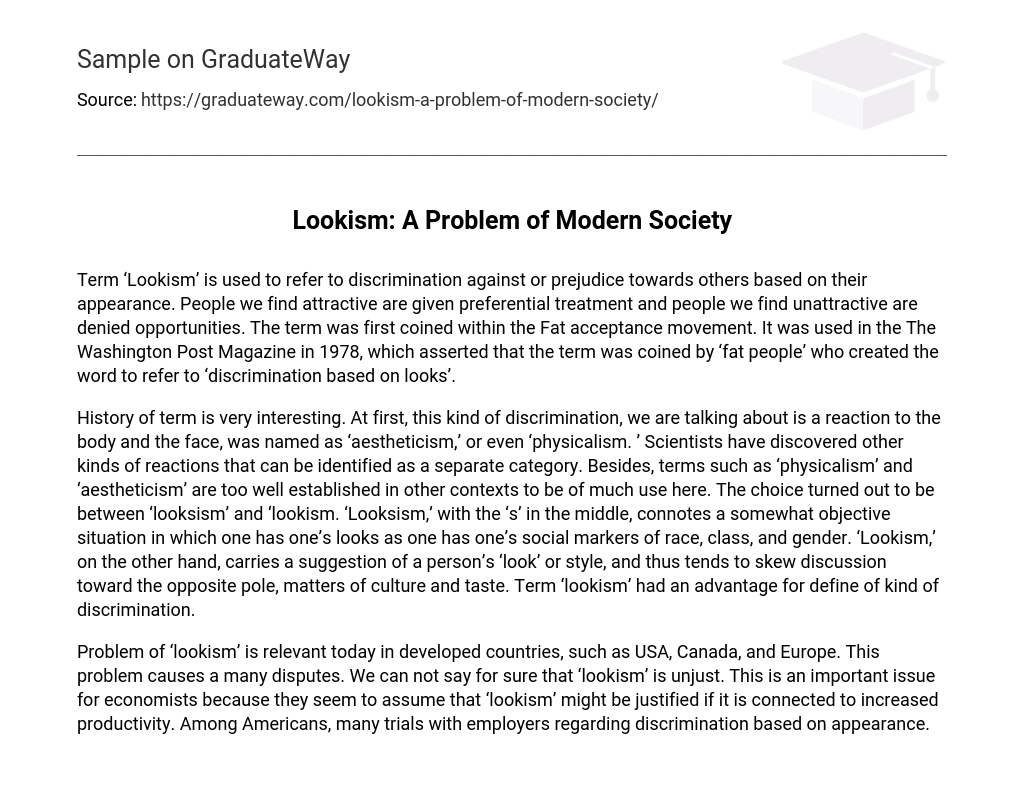Lookism, which refers to discrimination or prejudice based on appearance, is a term that emerged from the Fat acceptance movement. It was first mentioned in The Washington Post Magazine in 1978 and was coined by individuals within the movement to address the issue of discrimination based on physical appearance. Those who are perceived as attractive receive preferential treatment, while opportunities are denied to those considered unattractive.
The term has an interesting history. Originally, the discrimination being discussed was known as ‘aestheticism’ or ‘physicalism.’ However, scientists have identified other types of reactions that can be categorized separately. Furthermore, the terms ‘physicalism’ and ‘aestheticism’ already have established meanings in different contexts and are not very useful here. The choice came down to either ‘looksism’ or ‘lookism.’ With ‘looksism,’ there is a relatively objective situation where one’s looks are treated similarly to social markers such as race, class, and gender. In contrast, ‘lookism’ suggests a focus on a person’s style or appearance, which brings up matters of culture and taste. Using the term ‘lookism’ was beneficial in defining this type of discrimination.
The problem of ‘lookism’ is currently relevant in developed countries like the USA, Canada, and Europe. This issue leads to many disputes and its justice is still uncertain. Economists find it significant as they consider that ‘lookism’ could potentially be justified if it results in higher productivity. In the American context, there have been numerous legal cases filed by employees against employers due to appearance-based discrimination.





